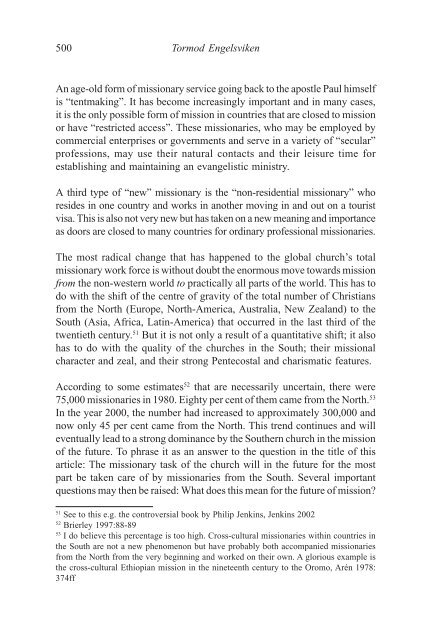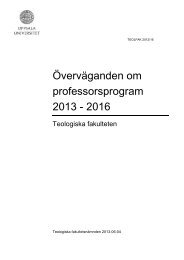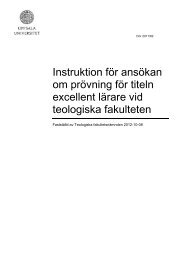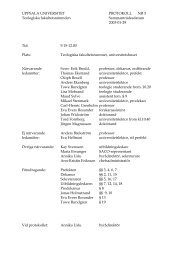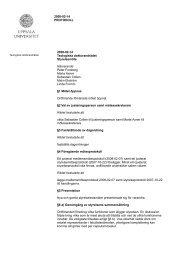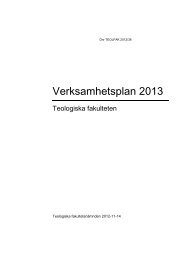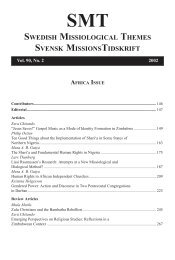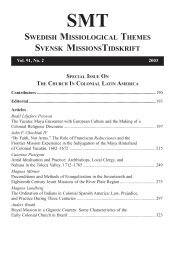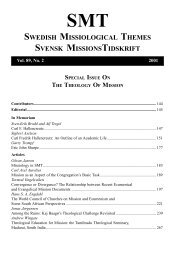SWEDISH MISSIOLOGICAL THEMES SVENSK MISSIONSTIDSKRIFT
SWEDISH MISSIOLOGICAL THEMES SVENSK MISSIONSTIDSKRIFT
SWEDISH MISSIOLOGICAL THEMES SVENSK MISSIONSTIDSKRIFT
Create successful ePaper yourself
Turn your PDF publications into a flip-book with our unique Google optimized e-Paper software.
500 Tormod Engelsviken<br />
An age-old form of missionary service going back to the apostle Paul himself<br />
is “tentmaking”. It has become increasingly important and in many cases,<br />
it is the only possible form of mission in countries that are closed to mission<br />
or have “restricted access”. These missionaries, who may be employed by<br />
commercial enterprises or governments and serve in a variety of “secular”<br />
professions, may use their natural contacts and their leisure time for<br />
establishing and maintaining an evangelistic ministry.<br />
A third type of “new” missionary is the “non-residential missionary” who<br />
resides in one country and works in another moving in and out on a tourist<br />
visa. This is also not very new but has taken on a new meaning and importance<br />
as doors are closed to many countries for ordinary professional missionaries.<br />
The most radical change that has happened to the global church’s total<br />
missionary work force is without doubt the enormous move towards mission<br />
from the non-western world to practically all parts of the world. This has to<br />
do with the shift of the centre of gravity of the total number of Christians<br />
from the North (Europe, North-America, Australia, New Zealand) to the<br />
South (Asia, Africa, Latin-America) that occurred in the last third of the<br />
twentieth century. 51 But it is not only a result of a quantitative shift; it also<br />
has to do with the quality of the churches in the South; their missional<br />
character and zeal, and their strong Pentecostal and charismatic features.<br />
According to some estimates 52 that are necessarily uncertain, there were<br />
75,000 missionaries in 1980. Eighty per cent of them came from the North. 53<br />
In the year 2000, the number had increased to approximately 300,000 and<br />
now only 45 per cent came from the North. This trend continues and will<br />
eventually lead to a strong dominance by the Southern church in the mission<br />
of the future. To phrase it as an answer to the question in the title of this<br />
article: The missionary task of the church will in the future for the most<br />
part be taken care of by missionaries from the South. Several important<br />
questions may then be raised: What does this mean for the future of mission?<br />
51 See to this e.g. the controversial book by Philip Jenkins, Jenkins 2002<br />
52 Brierley 1997:88-89<br />
53 I do believe this percentage is too high. Cross-cultural missionaries within countries in<br />
the South are not a new phenomenon but have probably both accompanied missionaries<br />
from the North from the very beginning and worked on their own. A glorious example is<br />
the cross-cultural Ethiopian mission in the nineteenth century to the Oromo, Arén 1978:<br />
374ff


